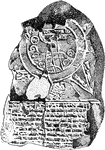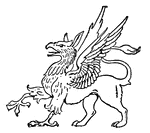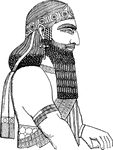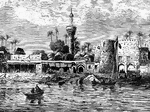Babylon
The Babylon ClipArt gallery includes 9 illustrations of places and people of ancient Babylon.

Babylon
"Babylon is said, by some writers, to have owed its foundation to Queen Semiramis, a person whose history,…

A Babylonian Map of the World
"A tablet of dark brown clay, much injured, dating from the 8th or 7th century B.C. The two large concentric…

Griffin
In heraldry, the griffin is a fabulous animal, with the head and forefeet of an eagle, and the body,…

Glazed Coffins, from Warka
"Another kind of coffins employed by the Chaldeans consisted of two large earthenware vessels, shaped…




